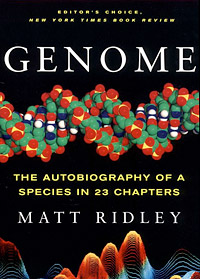The limitations of personal genome service testing
Like a lot of baby boomers, I find myself gravitating to newspaper obits, cross-checking ages and causes of death with my current health parameters, most notably heart disease (which felled my father and grandfather) and cancer (which slew my mother). And then there is Alzheimer’s disease, which a 2015 report by the Alzheimer’s Association projects will destroy the brains of more than 28 million baby boomers. Given the importance of family history and genetics for longevity, I plunked down $199 for a 23andMe Health + Ancestry Service kit, spit into the little plastic vial, opted in for every test available for disease gene variants and anxiously awaited my reports. How’d they do?
First, the company captured my ancestry well at 99.7 percent European, primarily French/German (29.9 percent), British/Irish (21.6 percent), Balkan/Greece (16.4 percent) and Scandinavian/ Sweden (5.5 percent). My maternal grandmother is German and grandfather Greek; my fraternal great-grandparents were from Sweden and Denmark.
Second, the traits report correctly predicted that I can smell asparagus in my urine, taste bitter and have hazel eyes, ring fingers longer than index fingers, little freckling and straight, light hair. Third, for the disease reports, my eye lit on the phrase “variants not detected” for Parkinson’s, cystic fibrosis, muscular dystrophy, sickle cell anemia, Tay-Sachs and, most concernedly, Alzheimer’s. “Oh joy, oh rapture unforeseen!” (Thank you, Gilbert and Sullivan.) (continue reading…)
read or write comments (6)
Science reveals a way to rise above our natures
Evolutionary biologist Jared Diamond of the University of California at Los Angeles once classified humans as the “third chimpanzee” (the second being the bonobo). Genetically, we are very similar, and when it comes to high levels of aggression between members of two different groups, as I noted in last month’s column on “The Ignoble Savage,” we also resemble chimpanzees. Although humans have a brutal history, there’s hope that the pessimists who forecast our eventual demise are wrong: recent evidence indicates that, like bonobos, we may be evolving in a more peaceful direction.
One of the most striking features in artificially selecting for docility among wild animals is that, along with far less aggression, you also get a suite of other changes, including a reduction in skull, jaw and tooth size. In genetics, this is called pleiotropy. Selecting for one trait may generate additional, unintended changes. (continue reading…)
Comments Off on The Domesticated Savage
Those three words often separate the scientific pros from the posers
My friend James Randi speculates — with only partial facetiousness — that when one receives a Ph.D., a chemical secreted from the diploma parchment enters the brain and prevents the recipient from ever again saying “I don’t know” and “I was wrong.” As one counterexample I hereby confess that in my column on Chinese science in the July issue I was wrong in my conversion of Chinese yuan as 80 to the dollar (it is eight).
More serious was a statement I made in the June issue about a Fox television program claiming that the moon landing was faked. I said that the lunar lander rocket showed no exhaust because there is no oxygen-rich atmosphere on the moon. I was partially wrong. The lack of an atmosphere plays a minor role; the main reason is that the lander’s engine used hypergolic propellants that burn very cleanly. In both instances, readers were kind enough to provide constructive criticism. (continue reading…)
read or write comments (3)
A review of Matt Ridley’s Genome: the Autobiography of a Species in 23 Chapters.
We are at a unique confluence of science and publishing where the results of the former are being dispersed by the latter at such a rate that even the most ardent reader of popular science books can hardly keep up. This is good news for science, of course, since its products are outstripping even Moore’s law of doubling every eighteen months, so updates and revisions are called for just as frequently. Lucky for publishers that readers are willing and able to plunk down a quarter of a hundred bucks to discover the secrets of the cosmos and life, and literary agents specializing in science tomes are demanding — and getting — five- and six-figure advances for their clients. And by most counts publishers are earning out those advances in a matter of months, thereby closing indefinitely the gap between C.P. Snow’s two cultures. (continue reading…)
read or write comments (1)





